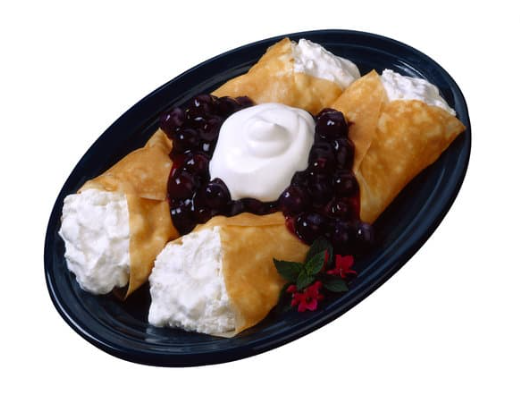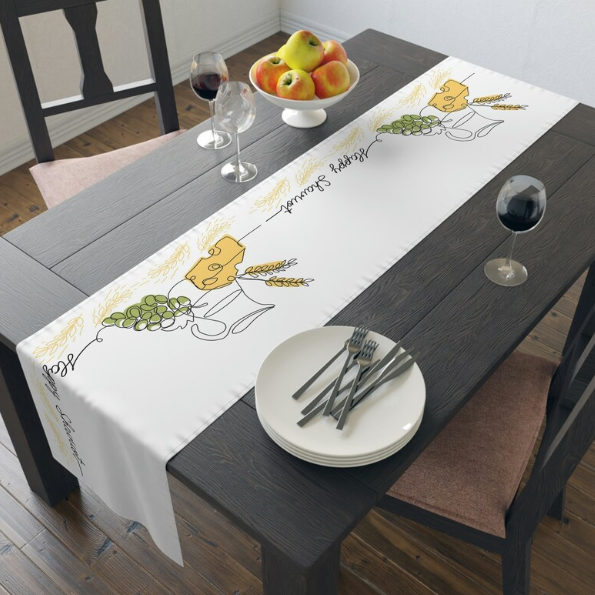On Shavuot dairy is eaten for the festival meals or at least of some of them. In many Jewish housesholds no meat is eaten during Shavuot. The traditions are similar around the world. Jewish lore offers several origins to the tradition of dairy: Moses was drawn out of the water on the day which later became to be Shavuot. He was willing to be nursed by only a Hebrew woman. On is merit that of choosing a Jewish mothers milk dairy is eaten.
Another story is that unti the Jews received the Torah they were not bound by the laws of Kashrut, all their pots and pans were ‘trefeh – unkosher so they ate dairy until they could kasher their utensils……
Want to understand What is Shavuot? Read our page on the basics of Shavuot and some of the most asked questions about this holiday. What is Shavuot and most asked questions
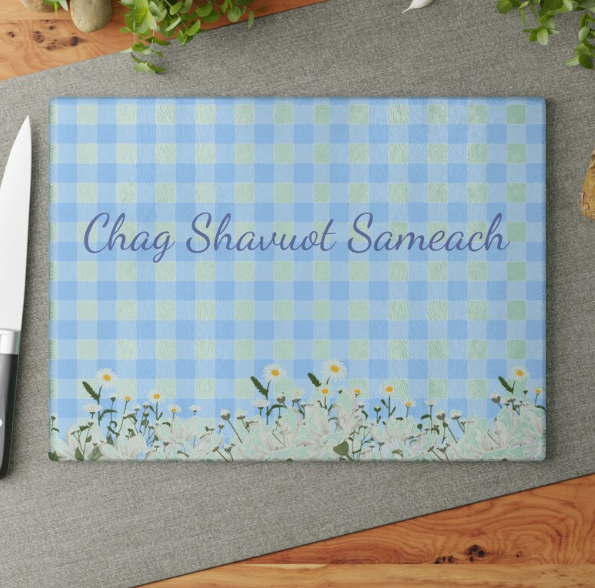
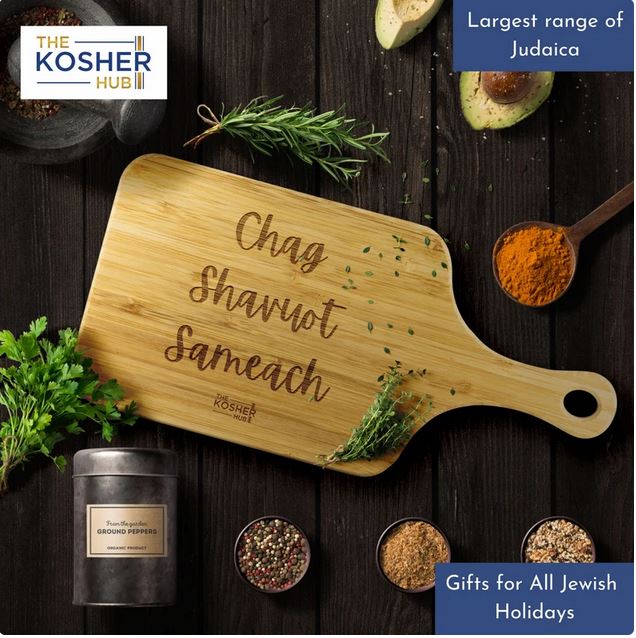

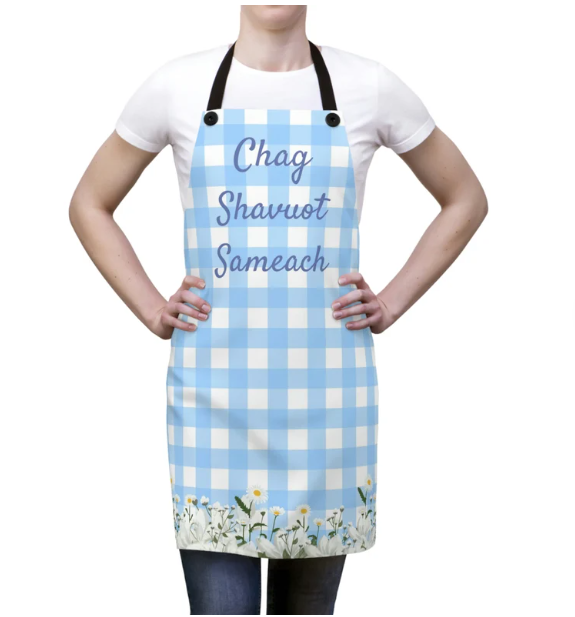
Ashkenazi Shavuot Food Traditions
- Cheesecake: Rich, creamy, and indulgent, cheesecake is an iconic dessert enjoyed by Ashkenazi Jews during Shavuot. It can be made with various flavors and toppings, such as fruit compotes or chocolate ganache.
- Blintzes: Blintzes are thin pancakes filled with sweet cheese, often served with a sprinkle of powdered sugar or a drizzle of fruit sauce. They are a beloved Shavuot treat in Ashkenazi cuisine.
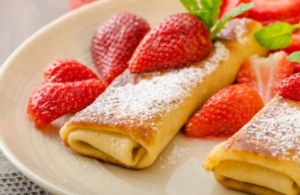
Blintzes - Kugel: A traditional Shavuot dish, kugel is a baked casserole typically made with egg noodles, eggs, and dairy. Sweet variations may include ingredients like cinnamon, raisins, and apples.
- Cheese-filled Bourekas: Bourekas, flaky pastries filled with savory or sweet fillings, are commonly enjoyed during Shavuot. For the holiday, cheese-filled bourekas are a popular choice among Ashkenazi Jews.
- Quiche: Quiche, a savory pie made with a pastry crust and a filling of eggs, cheese, and vegetables or meats, is often served as a light meal or appetizer during Shavuot.
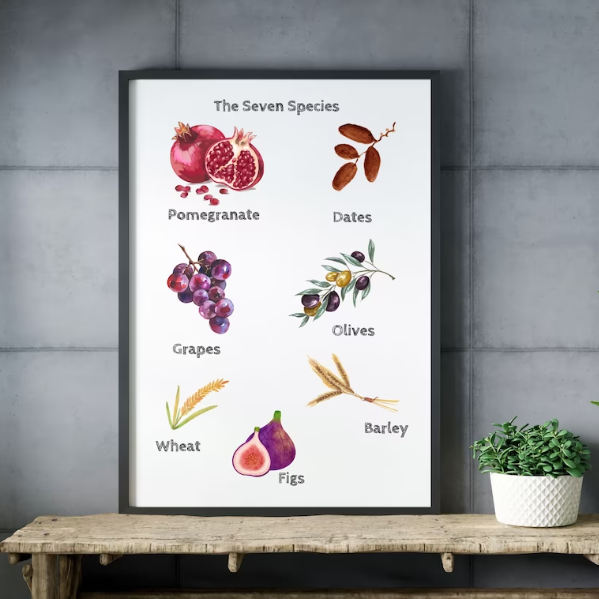
The Seven Species Print
Sephardic Shavuot Food Traditions
- Sambusak: Sambusak is a savory pastry filled with various ingredients, such as cheese, spinach, or meat. It is a popular Shavuot food in Sephardic cuisine, often enjoyed as an appetizer or snack.
- Bureka/Börek: Bureka, also known as börek, is a flaky pastry filled with ingredients like cheese, spinach, or ground meat. It is a traditional Shavuot food in Sephardic Jewish communities.
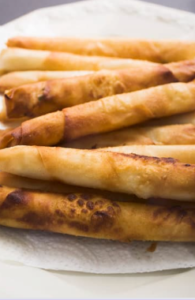
Borekas - Mejadra: Mejadra is a dish made with rice, lentils, and caramelized onions. It is a savory and satisfying option enjoyed during Shavuot in Sephardic cuisine.
- Kibbeh: Kibbeh is a dish made of ground meat, bulgur wheat, and spices, often formed into balls or patties and either baked, fried, or stuffed. It is a flavorful addition to the Shavuot table in Sephardic traditions.
- Malabi is a popular Middle Eastern dessert consisting of a creamy milk pudding flavored with rosewater and topped with a variety of toppings like shredded coconut, chopped nuts, or fruit syrup. It is commonly enjoyed during Shavuot by Sephardic Jews.

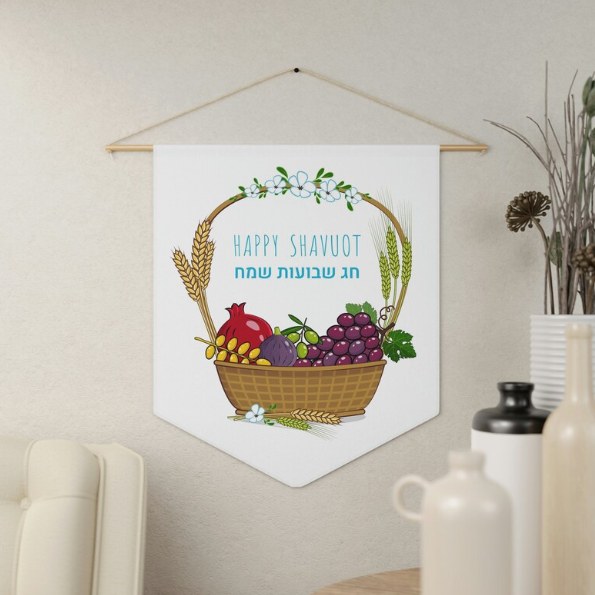

Another explanation grew out of allusion to the verse in Song of Songs (4:11) that “knowledge of the Torah is like milk and honey under the tongue.”
Another food tradition is to prepare or buy Challah that are a bit longer than usual. These Challot are a symbol of the “wave offering” – the two loaves of bread that the Jews were required on Shavuot to bring from their farms to the Temple (Lev 23/17)
But no matter where you are in the world dairy and desserts are a popular Shavuot food tradition.

